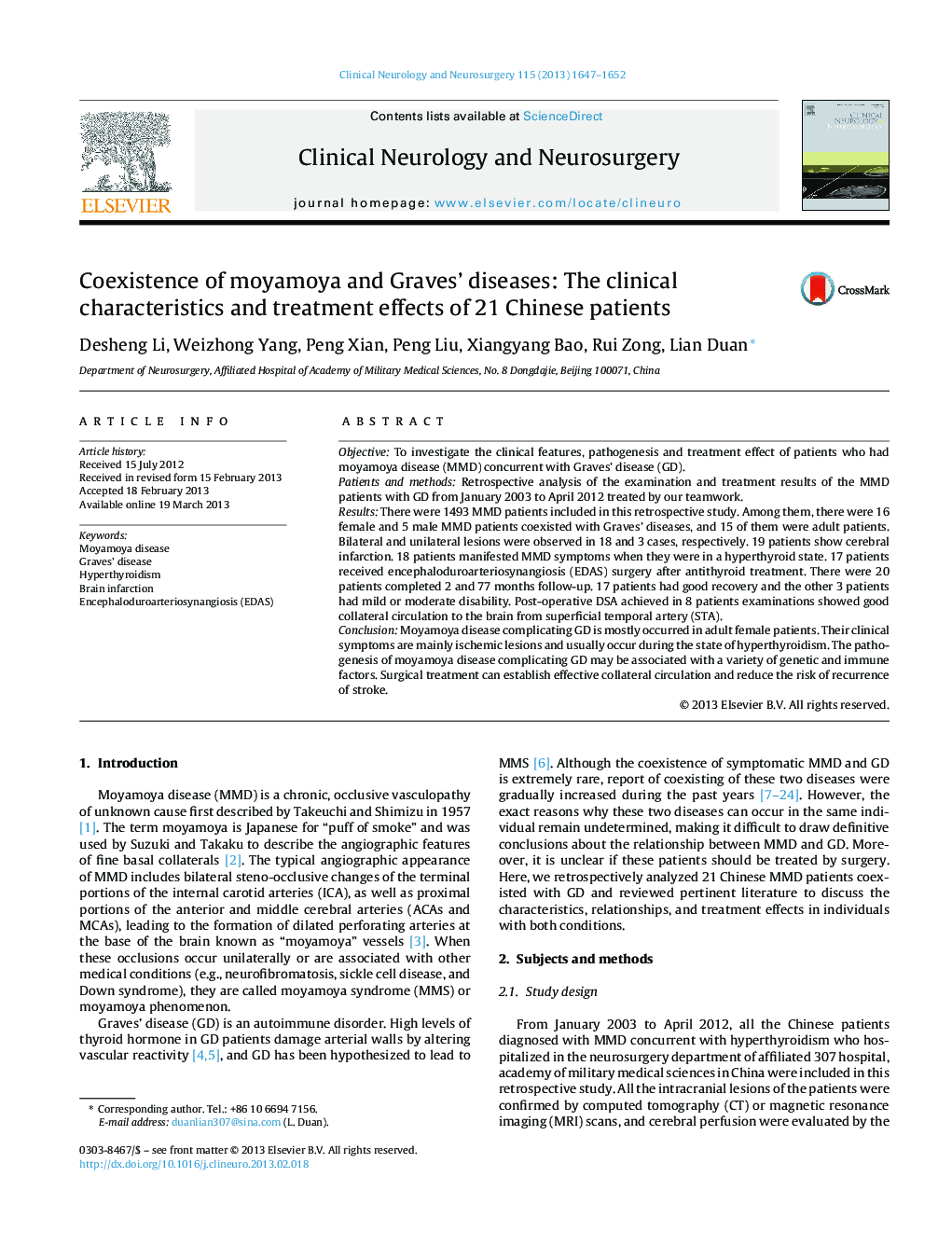| Article ID | Journal | Published Year | Pages | File Type |
|---|---|---|---|---|
| 3040476 | Clinical Neurology and Neurosurgery | 2013 | 6 Pages |
ObjectiveTo investigate the clinical features, pathogenesis and treatment effect of patients who had moyamoya disease (MMD) concurrent with Graves’ disease (GD).Patients and methodsRetrospective analysis of the examination and treatment results of the MMD patients with GD from January 2003 to April 2012 treated by our teamwork.ResultsThere were 1493 MMD patients included in this retrospective study. Among them, there were 16 female and 5 male MMD patients coexisted with Graves’ diseases, and 15 of them were adult patients. Bilateral and unilateral lesions were observed in 18 and 3 cases, respectively. 19 patients show cerebral infarction. 18 patients manifested MMD symptoms when they were in a hyperthyroid state. 17 patients received encephaloduroarteriosynangiosis (EDAS) surgery after antithyroid treatment. There were 20 patients completed 2 and 77 months follow-up. 17 patients had good recovery and the other 3 patients had mild or moderate disability. Post-operative DSA achieved in 8 patients examinations showed good collateral circulation to the brain from superficial temporal artery (STA).ConclusionMoyamoya disease complicating GD is mostly occurred in adult female patients. Their clinical symptoms are mainly ischemic lesions and usually occur during the state of hyperthyroidism. The pathogenesis of moyamoya disease complicating GD may be associated with a variety of genetic and immune factors. Surgical treatment can establish effective collateral circulation and reduce the risk of recurrence of stroke.
